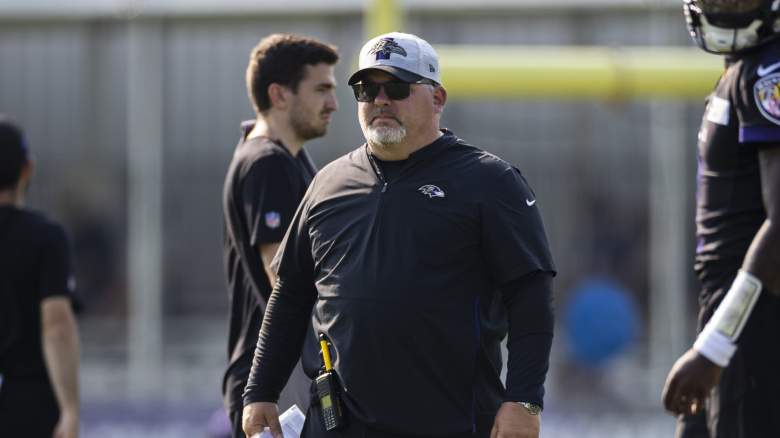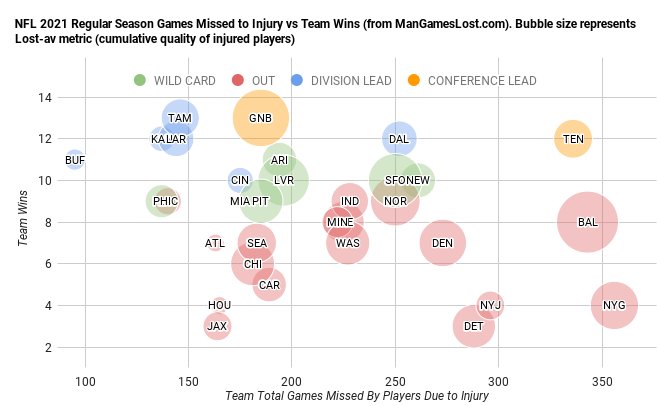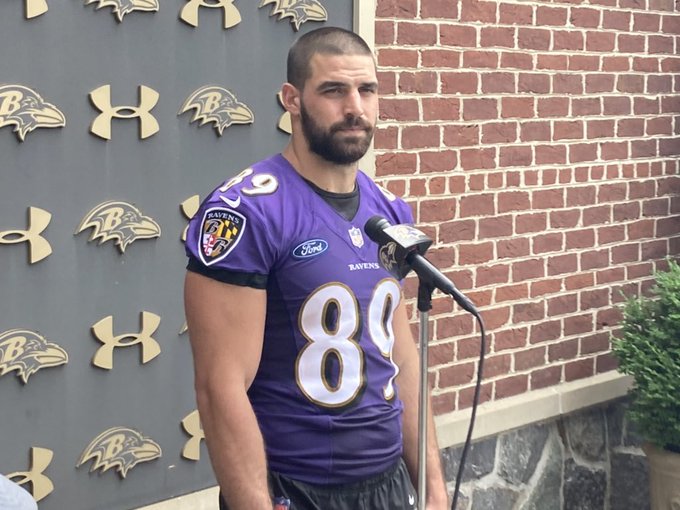
Getty The Ravens could call a different game on one side of the ball in 2022.
Working out what to expect from the Baltimore Ravens in 2022 is no easy task. It’s tricky because so much of what usually made the team strong on both sides of the ball went missing last season.
A glut of injuries robbed the Ravens of many of their key players. In the process, their absences also took away familiar Ravens staples, including an opportunistic defense and a ground-and-pound running game.
Things should be back to something close to normal this year, provided those returning from injuries get to full strength. Even so, one writer doesn’t know what to expect from coordinator Greg Roman’s Lamar Jackson-led offense, with new faces indicating changes are in store a tired scheme.
ALL the latest Ravens news straight to your inbox! Join the Heavy on Ravens newsletter here!
Is the Ravens’ Running Game Set for Subtle Changes?
The Ravens have often won or lost with a power running game. Things came off the rails when running backs J.K. Dobbins and Gus Edwards both missed the 2021 season.
It didn’t help left tackle Ronnie Stanley, blocking tight end Nick Boyle and quarterback Lamar Jackson also missed significant time. This graph from Man Games Lost NFL shows how the Ravens were most impacted by the absences of “quality players.”
Returning stalwarts will make a difference, but Ben Solak of The Ringer still included this offense on his list of the “six least-predictable units in the NFL.”
Solak noted how the familiar run-heavy gameplan called by Roman struggled to yield results last season: “Their seemingly indefatigable rushing attack, first in EPA/rush in both 2019 and 2020, fell to 11th in 2021; even before Lamar got hurt, it was down to fifth.”
The fact things were tough sledding with Jackson on the field suggests some alterations to the scheme are needed. Solak believes this year’s 25th-overall pick, center Tyler Linderbaum, will lead those changes: “As a player compared to Jason Kelce and Garrett Bradbury, Linderbaum simply did not fit the existing understanding of the Ravens’ prototypical offensive lineman, as Baltimore had favored big, long, powerful bodies—Ben Cleveland, Tyre Phillips, Orlando Brown Jr.—during the Jackson era. Linderbaum was destined for a zone blocking scheme. The Ravens were anything but.”
Linderbaum is a good bet to spark a change in how the Ravens block for the run. He may not be the biggest pivotman, but the 6’2″, 296-pounder thrived knocking open holes on the ground during his days with Iowa, per PFF College:
Last season’s starting center Bradley Bozeman tipped the scales at 6’5″ and 325 pounds, but the Ravens can benefit from Linderbaum’s lighter frame. Solak believes Roman can take advantage of the center’s move skills: “the Ravens may be changing their approach in the ground game, looking to maximize Linderbaum’s mobility as a puller and lead blocker as the Eagles do with Kelce in front of their running quarterback, Jalen Hurts.”
There’s an obvious comparison to be made here between Philadelphia Eagles starter Jalen Hurts and Jackson. Both are dual-threat playmakers adept at gashing defenses with their legs. Linderbaum’s presence should let Jackson become an even greater threat as a runner.
It’s not just Linderbaum who could encourage Roman to move away from power blocking to a more zone-based rushing attack. New right tackle Morgan Moses, added in free agency, spent his best years in Washington, where he executed the zone-blocking techniques favored by Jay Gruden and future Los Angeles Rams head coach Sean McVay.
The makeup of Baltimore’s running game isn’t the only part of this offense that might look different.
Ravens Featuring Different Style of Receiver
Solak thinks changes could also be on the cards in the passing attack. Specifically, he cited how the Ravens are set to use a different kind of wide receiver: “Again, the Ravens seem to be changing what they have prioritized during Lamar’s time at quarterback. Many of their recent WR additions—Marquise Brown, Miles Boykin, Devin Duvernay—have been all about speed. But last offseason, they selected Rashod Bateman—a fine athlete, but more of a possession receiver than a burner.”
Aside from making Rashod Bateman a bigger factor, Solak also noted how the decision to trade Marquise ‘Hollywood’ Brown to the Arizona Cardinals prompts a change: “philosophically, it seems that they’re moving on from speed, speed, speed at all costs.”
This is a tricky shift for the Ravens, but one that plays into their current strengths. Mark Andrews is Jackson’s go-to target, and the All-Pro tight end does his best work over the middle.
Their connection has shown no signs of waning this offseason, according to Jonas Shaffer of The Baltimore Sun:
Using Bateman and fellow wideouts like Devin Duvernay and James Proche on more in-breaking routes should draw attention away from Andrews. It would also reap rewards for Jackson.
The face of the franchise is entering a contract year, and while Jackson’s talents merit a payday on par with the elite players at his position, there are still doubts about his ability. Those doubts were summed up by a recent poll of executives, coaches, players and scouts taken by ESPN’s Jeremy Fowler that listed Jackson outside the league’s top 10 QBs.
As Fowler noted, Jackson “struggled mightily in his last three full games with six interceptions and 13 sacks as teams blitzed him heavily.” The problem was most evident against the Miami Dolphins in Week 10, per ESPN analyst Matt Bowen:
Pass plays that develop more quickly thanks to bigger receivers who can win on short and intermediate routes could be the Ravens’ best answer to this growing blitz problem.
Roman and head coach John Harbaugh have a tough decision to make about their offense. They can stick with what’s worked in the past, confident things will click again with key players finally healthy.
Alternatively, the Ravens can use the lessons learned during the dark days of last season, along with changes in personnel, to alter their blueprint. It’s not easy to predict which way they’ll go, but tweaking the playbook would give this team the edge it needs to ensure a return to the playoffs.


